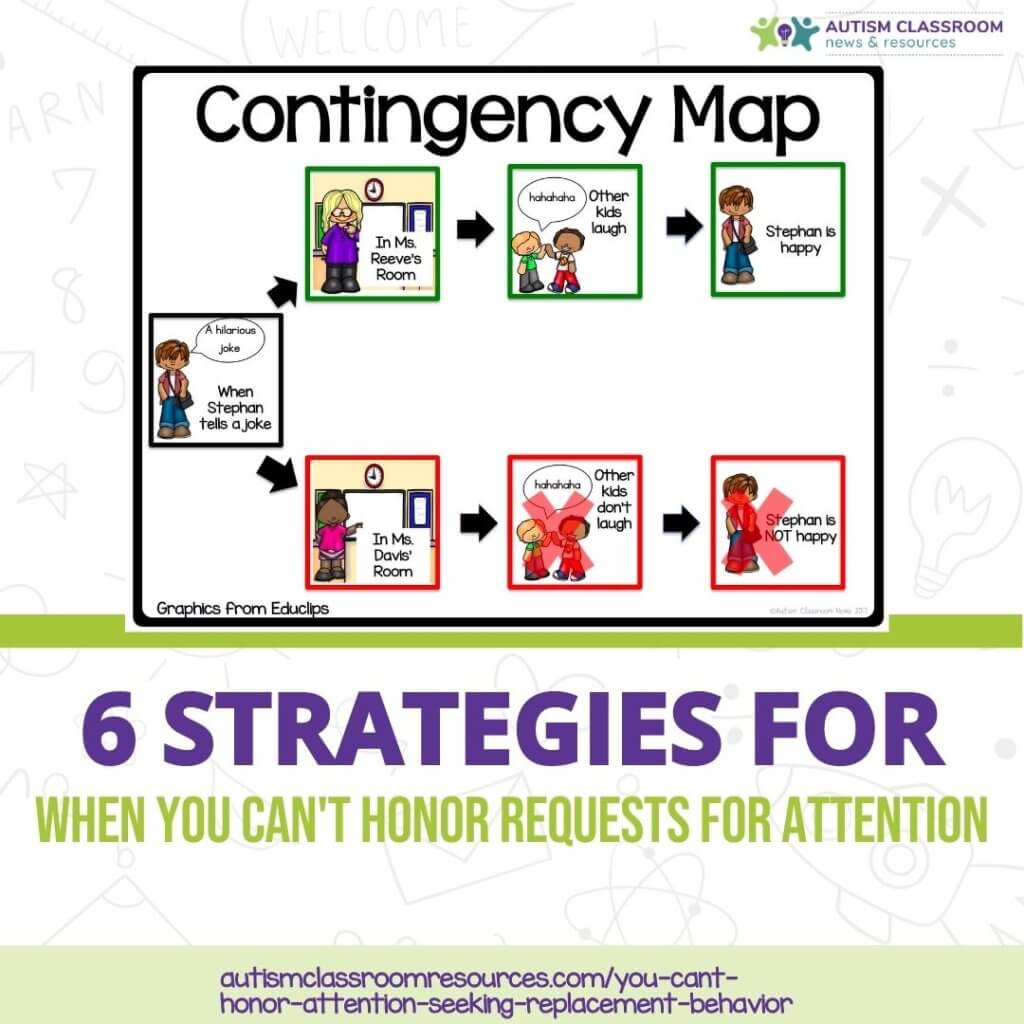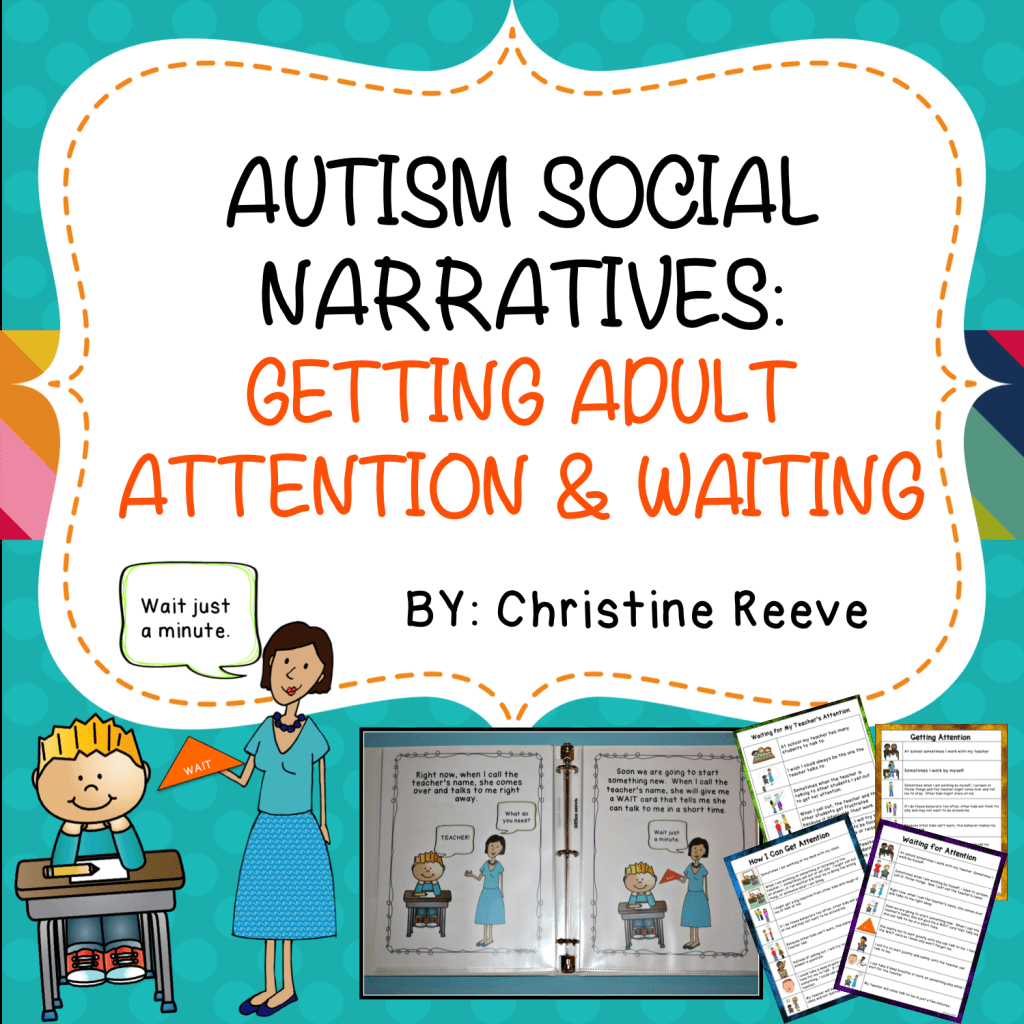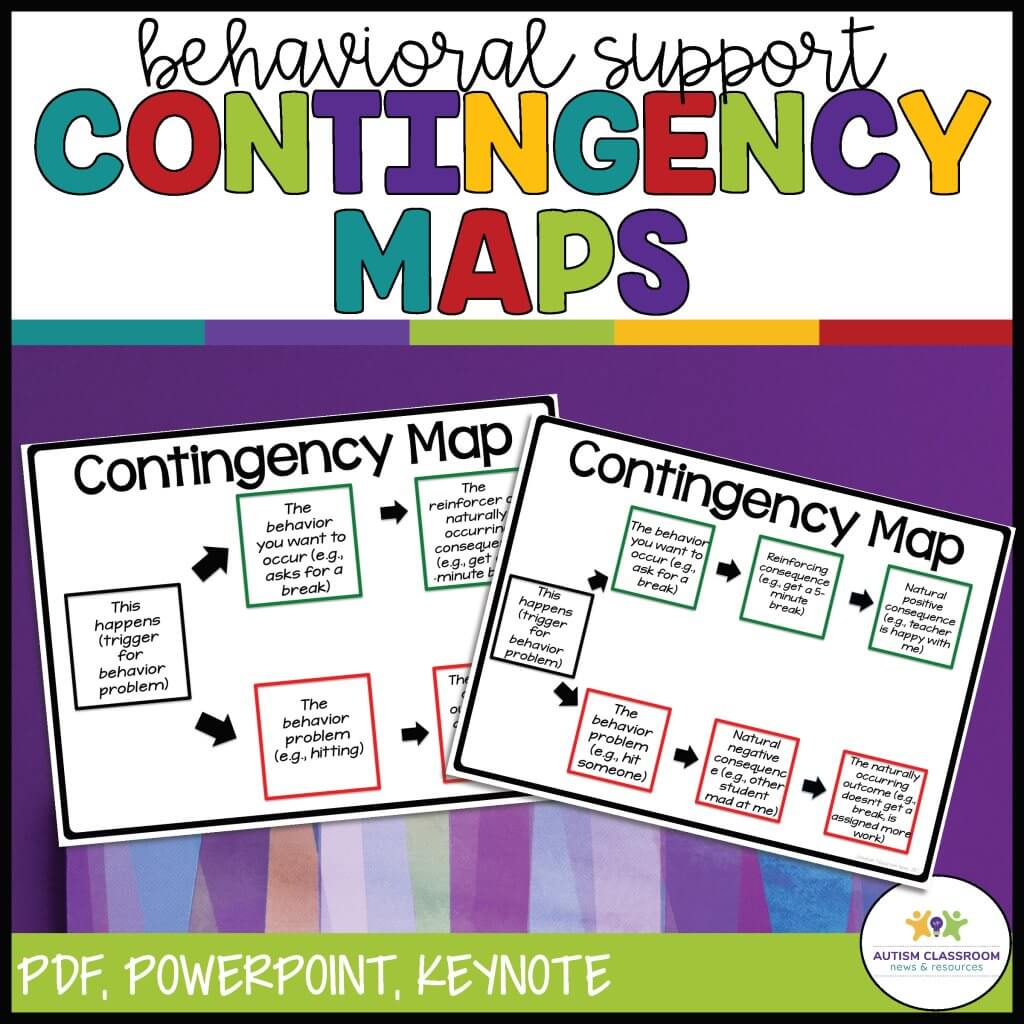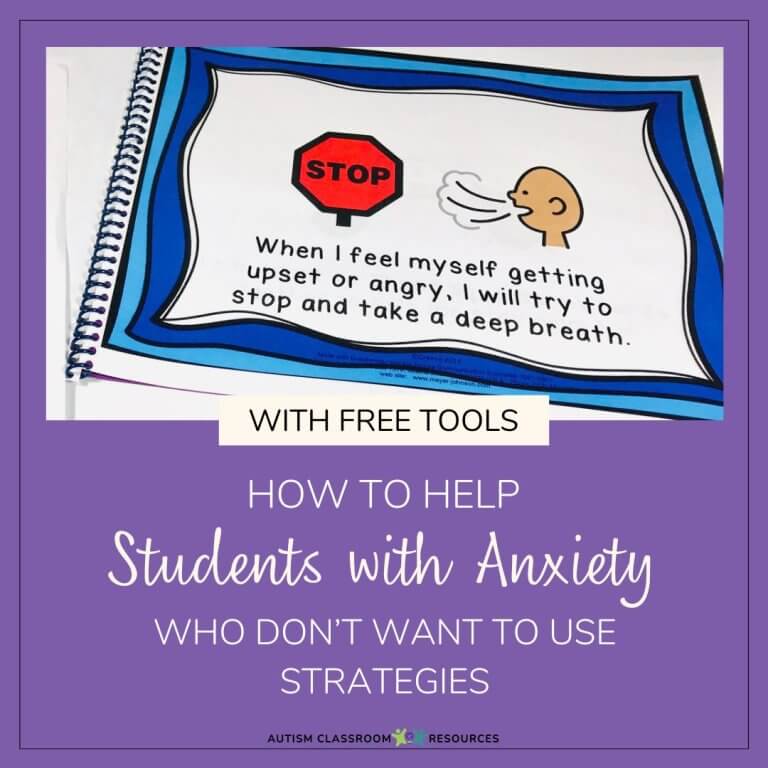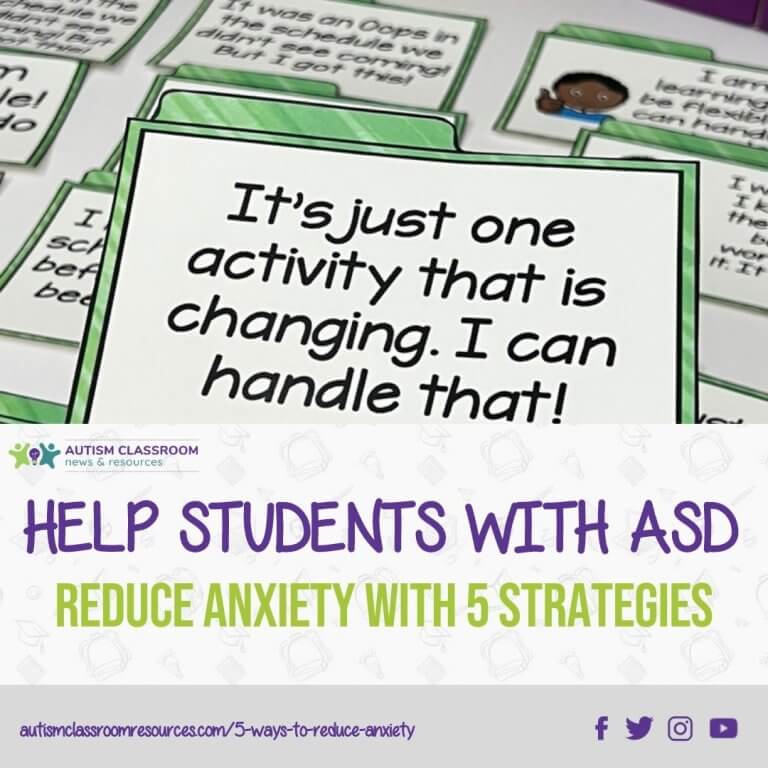Sharing is caring!
Have you ever had a situation in which you have a behavior support plan all set up with a good replacement behavior for attention-seeking behavior,? And then you get in a situation where it can’t be honored? Perhaps another teacher doesn’t allow jokes to be told in her class. Or maybe you have taught the student to raise his hand, but he can’t always be the one called on.
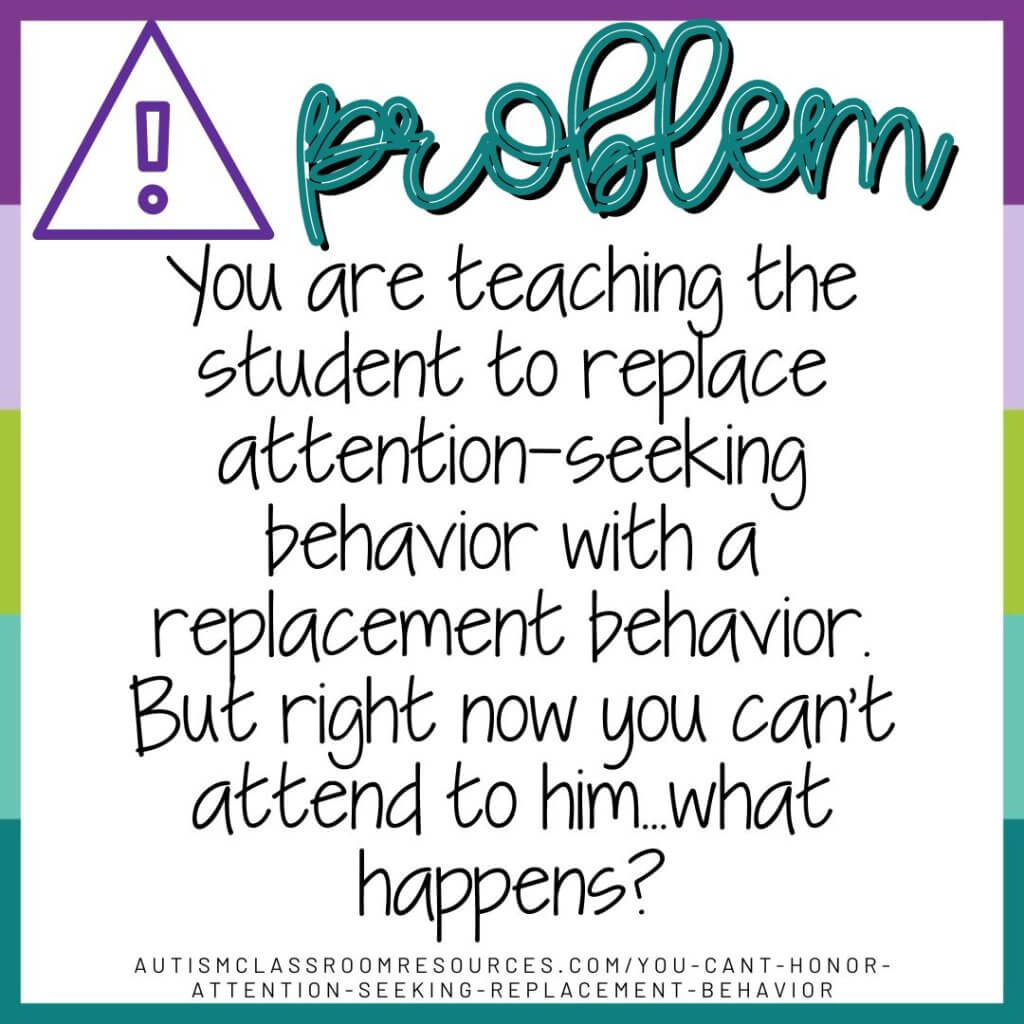
There will always be situations in which we can’t honor the attention-seeking replacement behavior we chose, even thought they are an appropriate skill. And of course we always are concerned because if we can’t attend (especially when we are first starting), then we are likely to get the original inappropriate behavior we are trying to reduce or eliminate.
But ignoring the undesirable behavior isn’t always an option either. So what do we to do that won’t sabotage our behavioral support plan? How do we avoid getting a resurgence of the negative behaviors or sabotaging the behavior support plan in a new environment?
I’ve got some suggestions for you of things to try. In addition, at the end of the post, I’ve got some free tools for you to download that can help you put these suggestions into place.
What Is A Replacement Behavior?
If you aren’t familiar with replacement behaviors, they are part of using functional communication training to reduce problem behavior. We teach replacement behaviors when we know the function of the behavior and when we want to replace the negative behavior with a appropriate skill to get reinforced–in this case to gain attention.
Table of Contents
It’s critical that we teach a new behavior that serves the same function as the target behavior we want to reduce. So, for instance, there is no replacement behavior for aggression, since that’s the form of the behavior. But if we know that the aggression gains attention based on our functional behavior assessment, then we can choose a new behavior that gains attention in a more appropriate way.
There are two pieces of choosing a replacement behavior that you have to really focus on. The first is making sure that your replacement skill has functional equivalence to the negative behavior. That means that it has to serve the same function (in this case gaining attention). But it also has to get as big or bigger a reaction than the attention-seeking problem behaviors do, at least at first. You can read more about that here and here.
So our first step is always to make sure you know the purpose of challenging behavior. Typically we would do that by completing some form of an FBA. But sometimes the function is pretty clear and you don’t need the full assessment.
Have You Met Stephen?
Stephen yells out in class repeatedly, often saying very inappropriate things. In the past, that behavior got a big reaction from the teacher, the other student and pretty much the whole classroom. His FBA indicates that purpose of his challenging behavior to gain the attention or reaction he often gets from it.

To address the behavior, which seemed to function to get that big reaction, his teacher decided to teach him a different way to gain attention. Just asking other kids for social interaction didn’t really get a huge reaction from other students–certainly not an equivalent reaction to the yelling out. So, his teacher taught him how to tell jokes. This is an appropriate skill and when she taught him a wide variety of hilarious jokes, it often got a big reaction.
But she discovered that there were times when the appropriate skill just really couldn’t be reinforced with the level of reaction that’s needed to make it work like Stephen in the general ed class. That starts to undermine the effectiveness of your behavior support plan.
6 Strategies to Help When You Can’t Honor Replacement Behaviors for Attention-Seeking Behaviors
These are 5 strategies you can put in place sometimes before as preventive strategies, or may involve responding in a different way. Let’s face it, there are some things in an educational environment that we just can’t ignore. Some of the strategies are things that we might have wanted to do before we transition to him to the new environment. Some are things that we could add into the general school environment that he’s already in and work through while he’s there.
Make Sure to Teach Tolerating Delays of Reinforcement
Part of the protocol for teaching a student to gain attention in an acceptable way is to make sure that we teach them to handle waiting to get the reinforcement. In the case of attention-seeking behaviors, this may mean teaching him to wait for a reinforcer–to tolerate delays before he gets the attention. I have a post about how to teach waiting here.
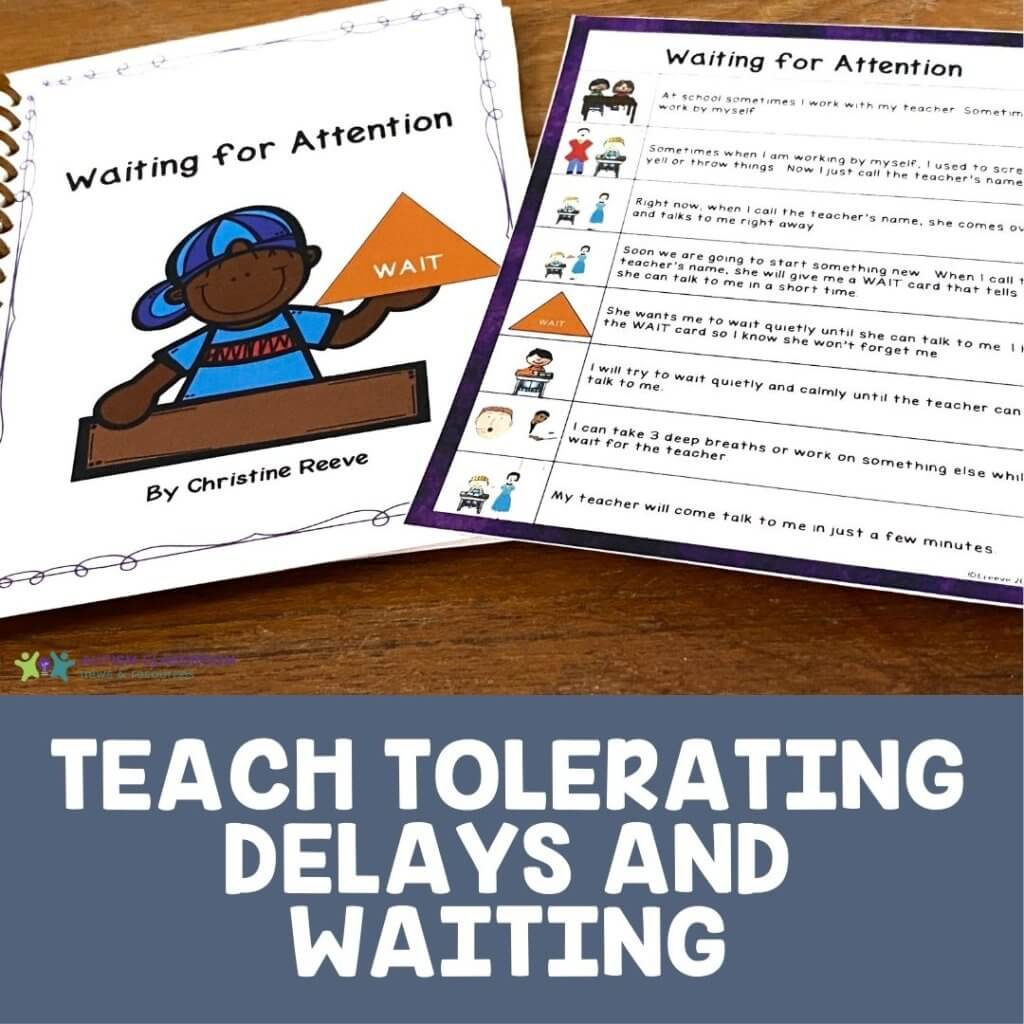
We can teach this in our initial teaching session by teaching him how to wait. As a general rule, this involves progressively delaying the attention with a signal, like a picture card, to wait. I have a product in my store that can help with picture cues and protocols for how to teach it.
Use Noncontingent Reinforcement
Noncontingent reinforcement is strategy from applied behavior analysis to decrease the need for specific reinforcement (in this case attention). For instance, if you’re in a situation in which you can’t give the reaction when it’s requested, you can increase the use of random presentation of that reaction or attention throughout the time that the student is there.
You want the reaction to not be contingent on the student’s behavior. They don’t have to do anything to earn it. It’s random. You’re simply trying to increase the general attention that’s being paid to the student regardless of their behavior so that you potentially decrease their motivation for the negative behavior to act out to get the attention. That doesn’t always work perfectly and you may need to provide that reinforcement more frequently than you’re able in that setting. But it is worth putting in place to see if you can curb that reaction seeking.
Use Visuals for When the Alternative Behavior Will Be Reinforced
Another way to handle not being able to reinforce the equivalent replacement behavior is to use visual cues. You can use them with or without social stories, but visuals are a good way to let the student know when something will be available.
We might want to use visuals to show the student when he’s going to be able to access the type of reaction that they’re using to receive the replacement behavior. For Stephen, I could put a visual on his schedule that shows him when he’s going to be able to tell jokes again. I might have a universal “NO” sign or an “X” over the present activity to remind him that he’s not going to get attention for telling jokes now.
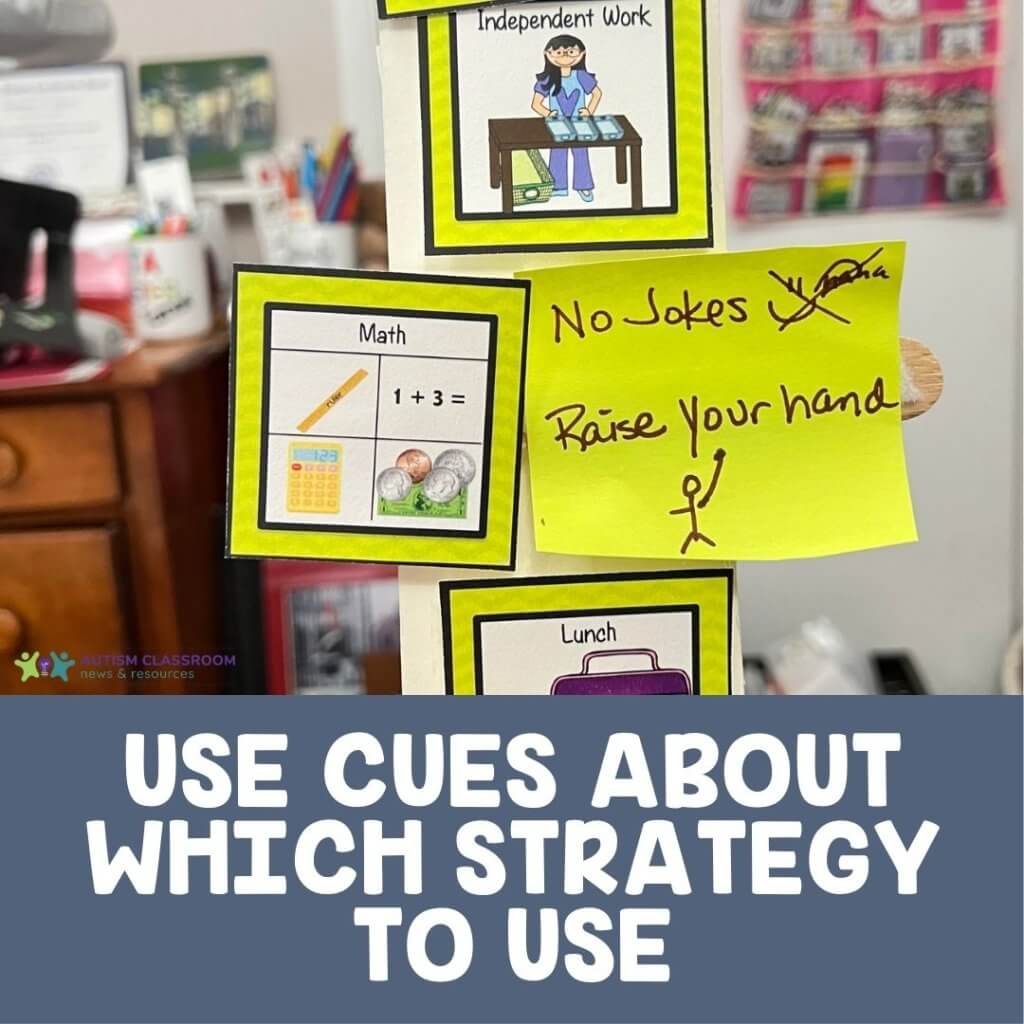
Then I might put jokes back on his schedule to show him when he can use them again. If he starts to get upset or tell a joke or starts to engage in negative behavior, I could redirect them back to the schedule non-verbally to show him when he can use that strategy again.
Use Contingency Maps
In Stephen’s situation, it might be if he’s in Miss Davis’ room in general ed and tells a joke, he is asked to be quiet. If he tells too many jokes, he might be asked to leave the room and he doesn’t like to leave the room. This is all mapped out in boxes with words and or pictures.
He might have another part of the map that shows if he tells a joke in Miss Reeve’s class in special ed, kids and Miss Reeve will probably laugh and tell me it was funny and we’ll keep working and he will be happy.
This type of map helps him to see which situations the strategy is likely to be helpful with. You can download a free editable set of posts from the resource library here as well. There’s a universal “X” and “NO” sign in them. There are printable visuals and templates in PowerPoint keynote and PDF format that you can use.
Use Limits
Let’s say you taught a student to raise his hand to get attention. In a typical educational setting you won’t be able to call on him every time. So you might set up a limit of the number of times you can call on him.
I would practice the appropriate skill in a smaller setting in which the student is successful first. That way I’m not throwing them into a setting in which it’s going to be more difficult and the attention may not be as readily available. In those situations, they’re going to need more redirection.
So for Stephen, I might start teaching the limits in the special education setting before I expect it to be effective in the larger school settings like the cafeteria or the general education classroom. You don’t want to go from free access of telling jokes to only three opportunities a day overnight. You want to gradually fade out.
I often use visual cues with this strategy as well so that students can track the number of times they have available to have the replacement behavior be reinforced. You could use tickets or a list he crosses off.
Social Stories
Social stories help our students with autism spectrum disorder, developmental disabilities, and even students with emotional disabilities to understand situations. They typically also help the students understand others’ perspectives of the situation.
For instance, in my store, I have a set of materials for teaching students to wait that includes a social narrative or how to ask for the teacher’s attention and how to wait for attention. The social narrative includes perspective statements about why it’s important to wait quietly to avoid disrupting other students’ work. It outlines the expected behavior of raising your hand and waiting for the teacher to call on you before speaking.

It also includes waiting cards to give to the student to let them know that you saw them and you recognize that they’re waiting and that you’re going to come back and call on them in a moment. So that they know that their attempt was really noticed and heard. It includes a sorting activity for behaviors that are appropriate and not appropriate during waiting time. These are all ways to help familiarize students like Stephen with these types of situations and expectations to prepare them for the environment in which they’re going to be taught and reinforced.
Final Tips
So these are all behavioral support strategies that can help avoid that dreaded situation where the alternative behaviors you have taught just can’t be honored. We want to make sure we have chosen appropriate replacement behaviors that are functionally equivalent to the inappropriate behavior. Focusing on teaching replacement behaviors are the most effective way to reduce negative behaviors and increase a student’s skills and quality of life at the same time. Consequently, I always think that taking some instructional time from academic skills to teach these specific new skills with short 1-1 sessions or small groups is worth the trade off.
In addition, I highly recommend including them as IEP goals in addition to the behavior intervention plan. This helps assure that they are a priority for the students’ educational program.
Replacing disruptive behavior or aggression with more appropriate methods of gaining attention can result in more acceptable behavior and student success.
Looking for Behavioral Support Tools?


